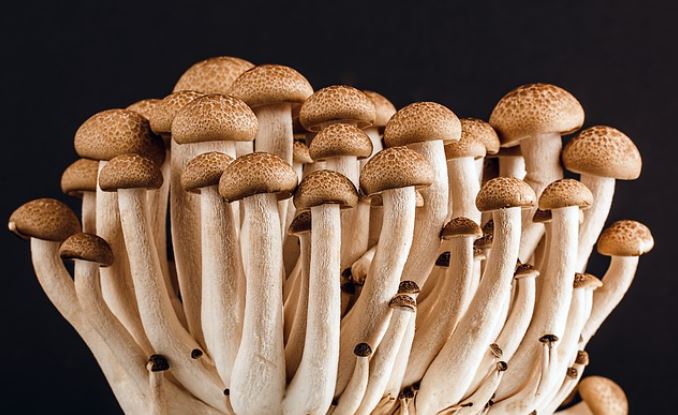
You don’t have to be a mushroom nerd to cultivate them indoors necessarily. Growing mushrooms indoors will eliminate the stress of going out to forage for them, plus it is quite fun and easy to do.
As much as I love gardening, I knew next to nothing about growing mushrooms. However, my love for the unique taste of these fleshy macro fungi motivated me to ardently explore and learn about how I could grow them personally. What’s better is that I discovered that I could easily plant them right inside my home.
If you are looking for information on how to grow mushrooms indoors, I hope to show you everything I learned from my indoor mushroom planting endeavor.
What Do You Need to Grow Mushrooms Indoors?
There are various methods you can employ, and these multiple methods require peculiar supplies. However, I will take you through one of the easiest ones. Furthermore, growing mushrooms indoors is a much more peculiar process than the typical outdoor cultivation, and some essential supplies are required. These are things you have easy access to.
- Sawdust Spawn
- Microwave Oven
- Microwave-safe Container
- Baking Pan
- Sawdust
- Heating Pad
- Clean Fabric
Buy sawdust spawn from a reputable online or local store, as the quality of spawn you purchase will ultimately affect the mushroom growth process. There are other forms of mushroom spawns you can go for like grain, woodchip, straw, or plug spawn. However, I used the sawdust spawn, and I made sure it was from a reliable store.
It is needed to sterilize your growth substrate and kill micro-organisms that may compete with mushrooms for nutrients.
You need a microwave-safe container to hold your substrate medium for sterilization. You don’t have to worry about the size of the container necessarily. You can always sterilize your substrate material in batches if you are using more substrate than it can contain at once.
This is the medium in which you will mix the substrate with the spawn, and cultivate the mushroom. Get as many pans as you like, dependent on how mush spawn and substrate you have.
As a beginner in indoor mushroom cultivation, I would advise you to use hardwood sawdust substrate to grow your mushrooms. However, there are other growing substrates like straw and coffee grounds you can use.
This will help you maintain a constant temperature when colonizing the substrate with the spawn, as well as when the mushrooms start to develop. In the absence of a heating pad, you can do without one and try to control the ambient temperature of the growth environment as best as you can.
While this is not compulsory to have, you may need it to conserve moisture as the mushrooms develop after the colonization process.
How to Grow the Mushrooms?
The first thing I had to do was choose the exact mushroom type to cultivate. I would recommend that you select any of these three popular types that are easy to grow indoors: Shiitake, White Button, or Oyster. The easiest of these three to cultivate is the oyster mushroom, as it grows well in straw, coffee ground, or hardwood sawdust.
Buy Mushroom Spawn
After choosing your most preferred mushroom type, the first step to take is to purchase spawns. While you can also grow mushroom from spores, buying the spawn is akin to buying seedlings. The success of your mushroom planting endeavor is, to a large extent, dependent on the quality of spawn you purchase. Make sure you buy from reputable stores- locally or online.
Sterilize and Hydrate Substrate
I use hardwood sawdust to grow my mushrooms, as I typically grow oyster mushrooms. Sterilizing the sawdust substrate before introducing the spawn will kill off all micro-organisms that may compete with fungi for nutrients. An easy way to do this is by heating the sawdust substrate in a microwave oven.
- Put substrate in a microwave-safe container
- Add water until the substrate is damp all through
- Put the container in microwave and heat until the water dries up
Depending on the quantity of sawdust substrate you want to use, you may have to sterilize in batches to ensure effective sterilization.
Add Spawn to Substrate and Colonize
After killing off all micro-organisms through sterilization, you need to add the spawn to the substrate. Choose a baking pan that can accommodate as much spawns as you would like, put some of the sterilized substrates into the pan, and then mix the spawn while gradually adding more substrate until you achieve a thorough and consistent mix.
After mixing the spawn into the substrate, put the pan in a controlled temperature area of about 70°F. I suggest you use a heating pad set to that particular temperature for this. Place the mixture in a dark environment for about two-three weeks. It is during this period that the spawn will fully colonize the substrate.
Move setup into the right environment
The substrate should be fully colonized between two-three weeks (mine took just two weeks). You should notice a white fuzzy covering over the substrate when the colonization is through. It is at this point you will need to move the setup to a dark and cooler environment. With the temperature of the heating pad reduced to 55°F, transfer to your basement, if you have one, or a drawer with sufficient space.
If your sterilization was not as thorough as should be or if you managed to contaminate the substrate in any way, you will likely discover some moldy areas. If you do see molds on your substrate, remove those areas and throw them out.
Spray the mix consistently with water to keep it damp enough. Alternatively, you can cover the mix with a wet cloth, and spray the fabric regularly to conserve moisture. The aim is to keep the growing environment as moist as possible and the temperature low enough to encourage mushroom growth.
Harvest Mushroom
In another three weeks or less, the mushrooms should appear, and when they do, all you need to do is keep the environmental conditions constant until they are ready to be harvested. Mushrooms are ready to pick as soon as the caps entirely separate from the stems. One mistake I made was leaving the mushrooms for too long after maturation before harvesting.
This affected the taste of the mushrooms. Harvest as soon as they mature and cook them immediately, as they won’t remain good for more than a week after harvesting.
With a sharp knife, cut the developed mushrooms at the stem. You should take care not to damage the growing mushrooms as you harvest the ripe ones. Depending on how much spawn you infuse, you should harvest mushrooms three or four times. I harvested full-grown mushrooms four times before throwing out the substrate.
Conclusion
I hope you find this article helpful. There is a significant difference between cultivating mushrooms outdoors and planting them indoors. However, if you religiously follow the process discussed above, I guarantee that you will have a successful mushroom cultivation endeavor.
One of the mistakes I made was not sterilizing my sawdust substrate. Although I harvested a considerable quantity, I believed I could have had more if no micro-organisms were competing for nutrients. Growing mushrooms indoors is not as tricky as a lot of people think, and if you found this article helpful, you should share it with your friends and family.







![Rose Names And All Rose Types – The Most Detailed Guide [2022] rose names](https://www.yardious.com/wp-content/uploads/2018/05/rose-names-100x70.jpg)










